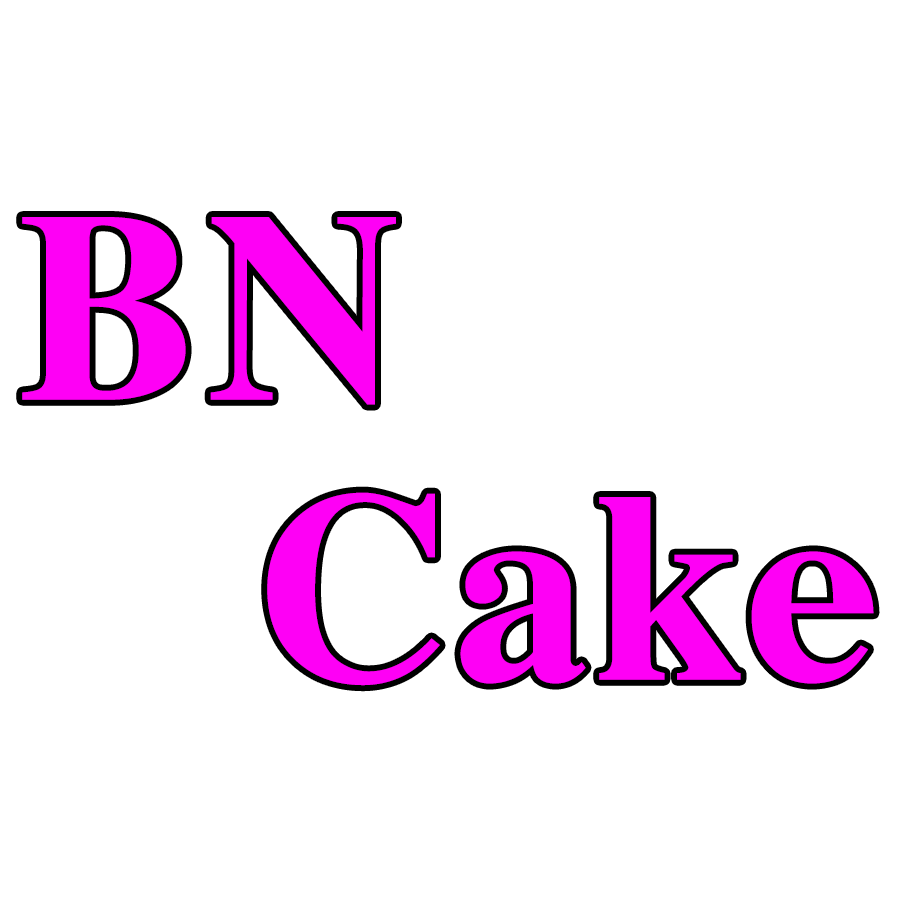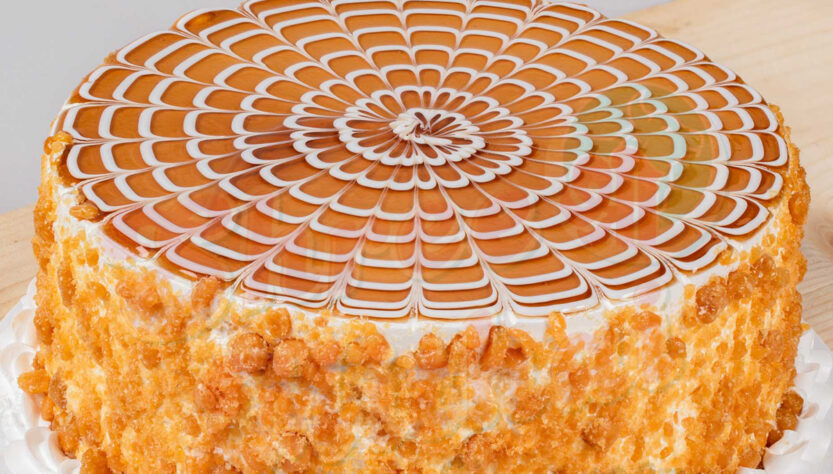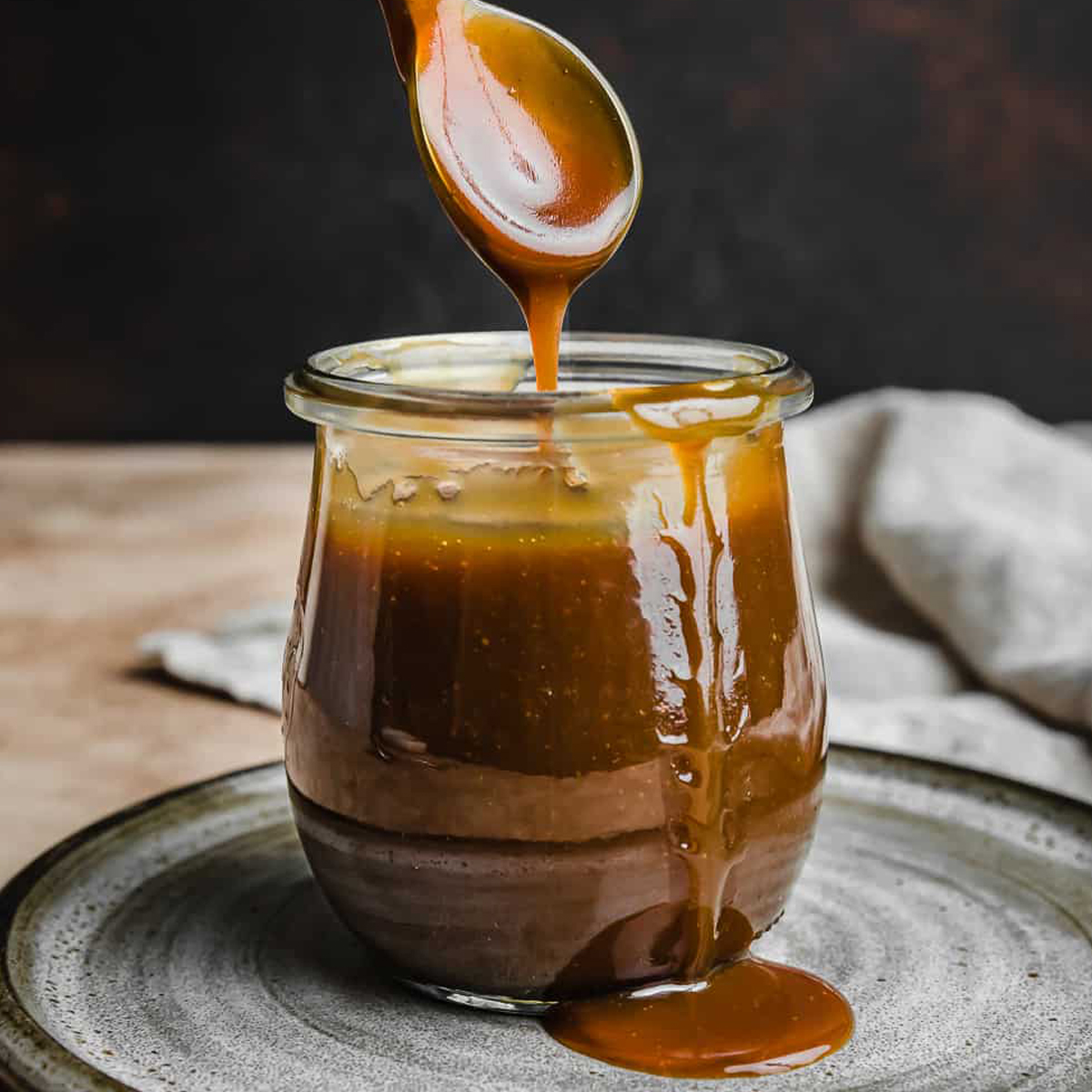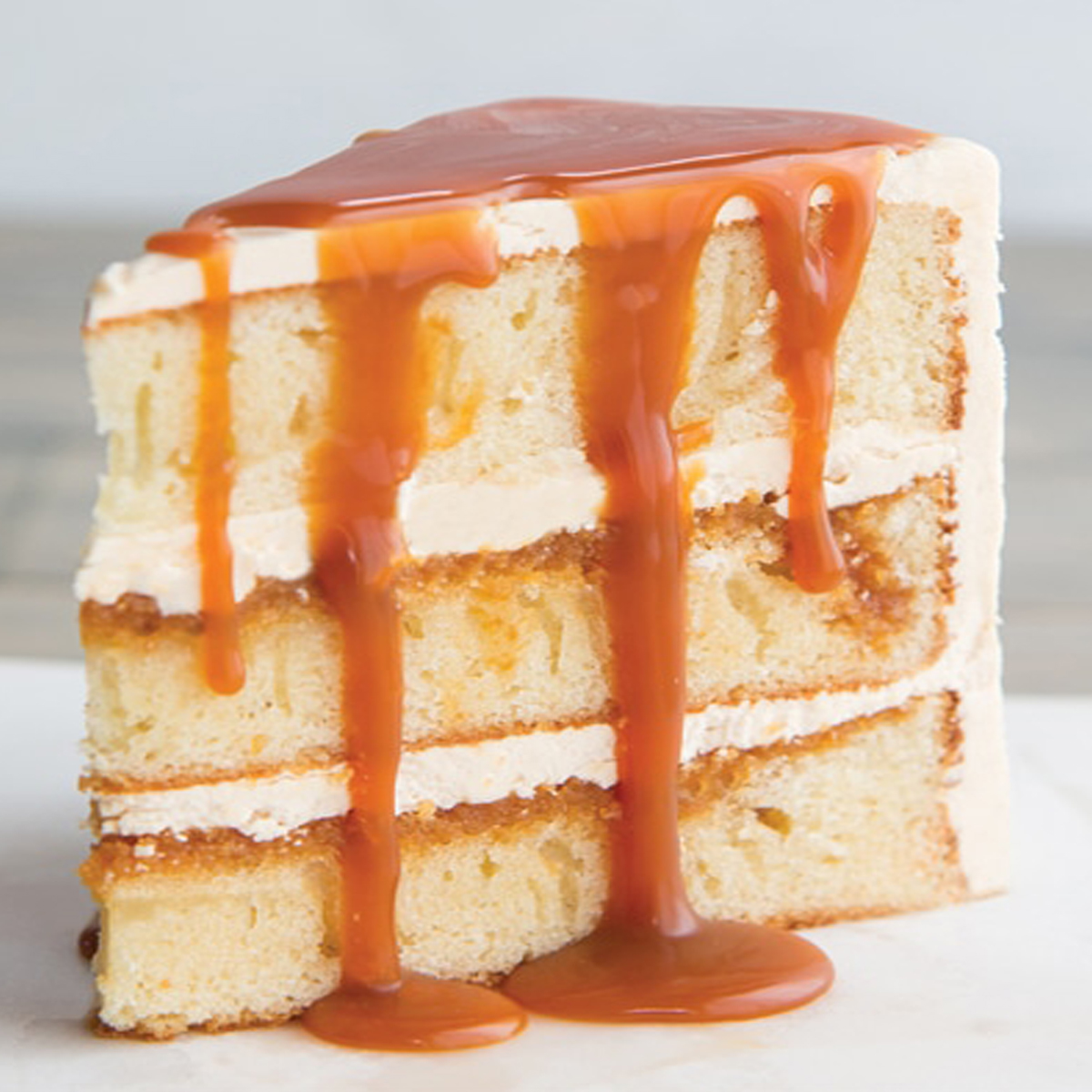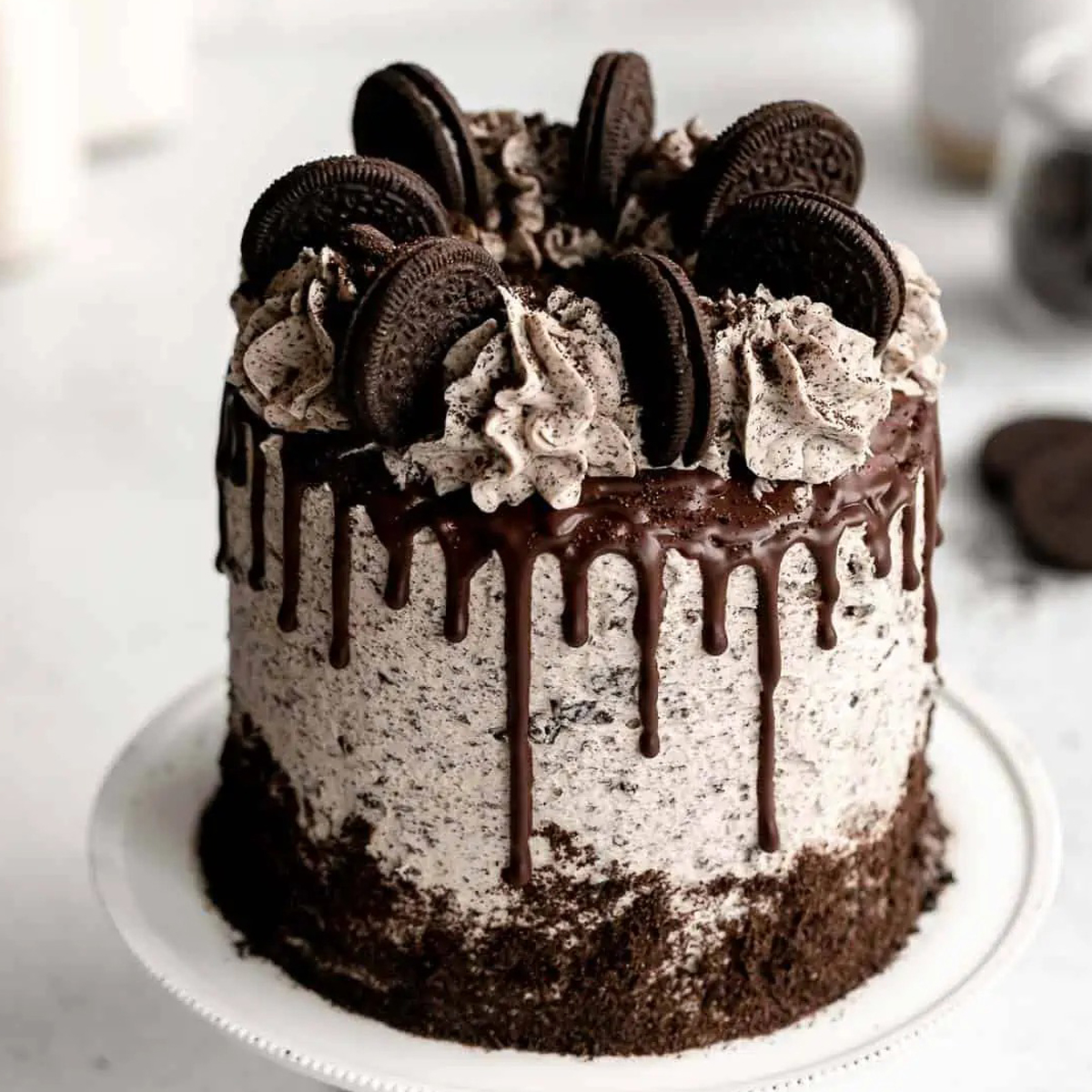Indulge in a world of rich and buttery flavors with the Butterscotch Cake. This delectable treat is a celebration of the caramelized sweetness and creamy richness that defines classic butterscotch. With every bite, you’ll discover layers of moist cake infused with the distinct notes of caramel and brown sugar, harmonizing flawlessly with velvety butterscotch frosting. The Butterscotch Cake is a nostalgic journey that takes the beloved flavors of butterscotch and transforms them into an elegant dessert, perfect for commemorating special moments or simply satisfying your cravings for a truly delightful confection.
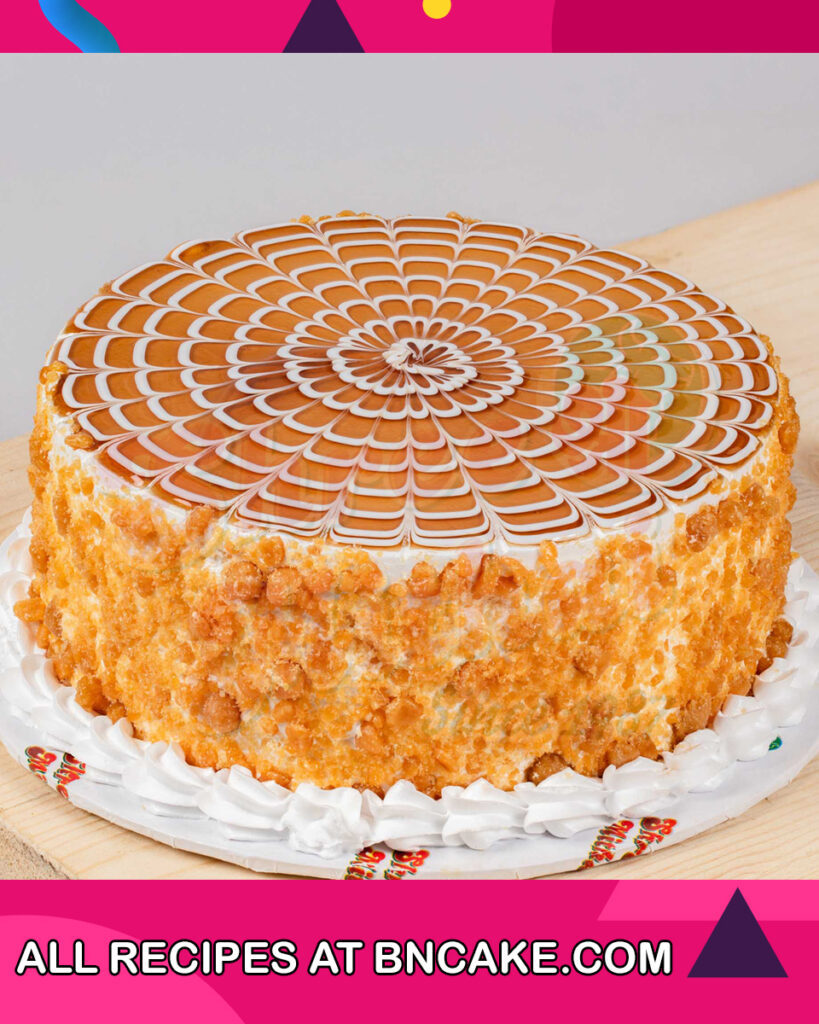
What Is Butterscotch Cake?
A Butterscotch Cake is a delightful dessert that features the rich and distinctive flavor of butterscotch throughout its layers. This cake typically consists of moist and tender cake layers that are infused with the flavors of brown sugar, butter, and caramel. The crowning glory of a Butterscotch Cake is its luscious frosting, which often replicates the creamy and indulgent taste of butterscotch.
Here’s what you can expect in a classic Butterscotch Cake:
1. Cake Layers: The cake layers are made with ingredients like butter, brown sugar, and sometimes butterscotch chips or extracts to infuse them with the signature flavor. The texture is moist and tender, providing the perfect base for the rich butterscotch frosting.
2. Butterscotch Filling: Between the cake layers, you’ll find a generous layer of butterscotch filling. This filling is usually a velvety mixture made from butter, brown sugar, cream, and sometimes butterscotch extract. It adds an extra layer of flavor and creaminess to the cake.
3. Butterscotch Frosting: The crowning glory of the Butterscotch Cake is its frosting. The frosting replicates the distinct flavor of butterscotch by incorporating ingredients like butter, brown sugar, and cream. It’s creamy, sweet, and often carries a hint of caramelized richness that characterizes traditional butterscotch.
4. Garnishes: Butterscotch Cakes can be garnished in various ways, such as drizzles of butterscotch sauce, sprinkles of chopped nuts (like pecans), or even a touch of sea salt to balance the sweetness.
Butterscotch Cakes offer a delightful twist on traditional flavors, combining the comfort of caramel and brown sugar with the indulgence of a well-crafted cake. They’re a popular choice for special occasions or whenever you’re craving a dessert that brings the warm and familiar taste of butterscotch to the forefront.
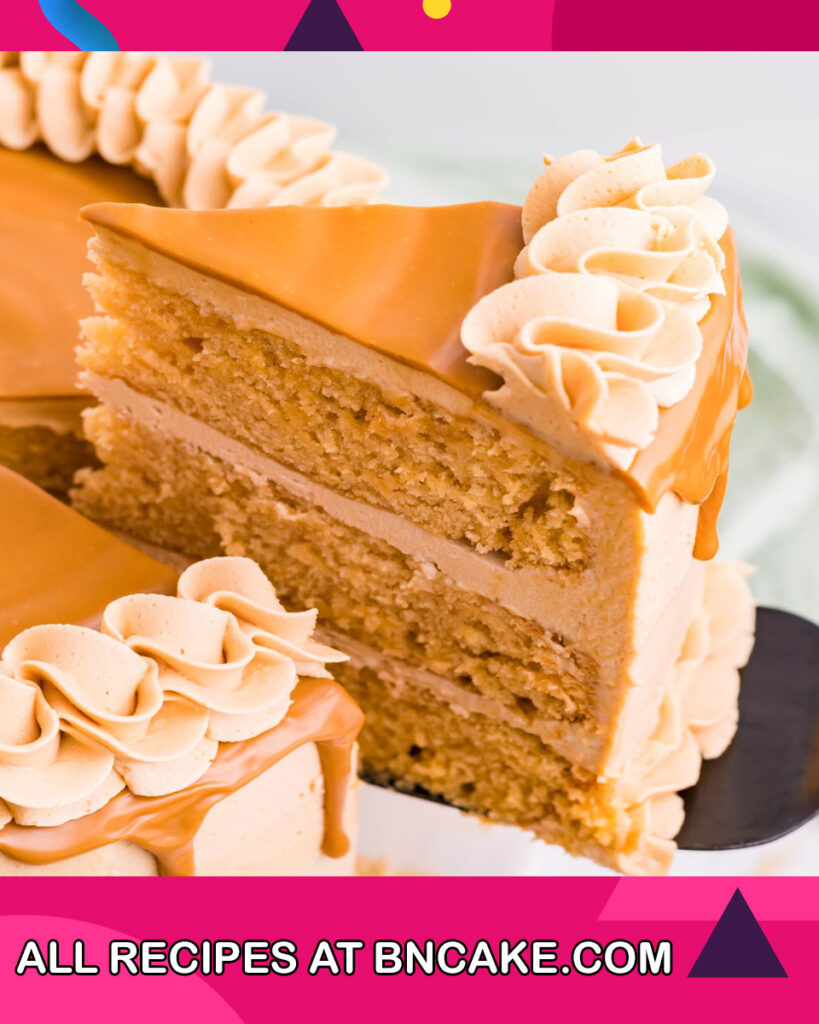
Why You Will Love Butterscotch Cake Recipe?
- Irresistible Flavor: The Butterscotch Cake recipe delivers a truly irresistible flavor profile. The combination of brown sugar, butter, and caramelized notes creates a unique and indulgent taste that’s unlike any other cake.
- Rich and Creamy Texture: The cake layers are moist and tender, while the butterscotch filling and frosting contribute a rich and creamy texture. Each bite is a delightful contrast of flavors and mouthfeel.
- Nostalgic Comfort: The taste of butterscotch is often associated with warm memories and nostalgic feelings. Biting into a slice of Butterscotch Cake can evoke a sense of comfort and familiarity.
- Perfect for Occasions: Whether it’s a birthday, anniversary, or any special celebration, a Butterscotch Cake is a unique and delicious choice that stands out from the typical chocolate or vanilla options.
- Impressive Presentation: Butterscotch Cakes are not only delicious but also visually appealing. The caramel hue of the cake layers and the creamy butterscotch frosting make for a stunning presentation.
- Customization: While the classic recipe is fantastic, there’s room for creativity. You can add extra elements like chopped nuts, drizzles of butterscotch sauce, or even incorporate layers of other fillings to make the cake your own.
- Crowd Pleaser: The rich and familiar flavors of butterscotch are universally loved. This cake is likely to be a hit with guests of all ages.
- Baking Adventure: If you enjoy experimenting in the kitchen, working with butterscotch flavors can be a delightful baking adventure. It’s a chance to try something new and expand your culinary skills.
- Conversation Starter: Butterscotch Cake is not as common as other cake flavors, so serving it can lead to interesting conversations and surprise your guests with a new taste experience.
- Memorable Moments: The unique taste and presentation of Butterscotch Cake can turn ordinary moments into memorable ones. Sharing this cake with loved ones creates special memories that linger long after the last bite.
In essence, the Butterscotch Cake recipe offers a chance to explore a distinct flavor profile and indulge in a cake that’s as delightful to the taste buds as it is to the eyes. Whether you’re a fan of butterscotch or simply looking to try something new, this recipe promises a truly enjoyable baking and eating experience.
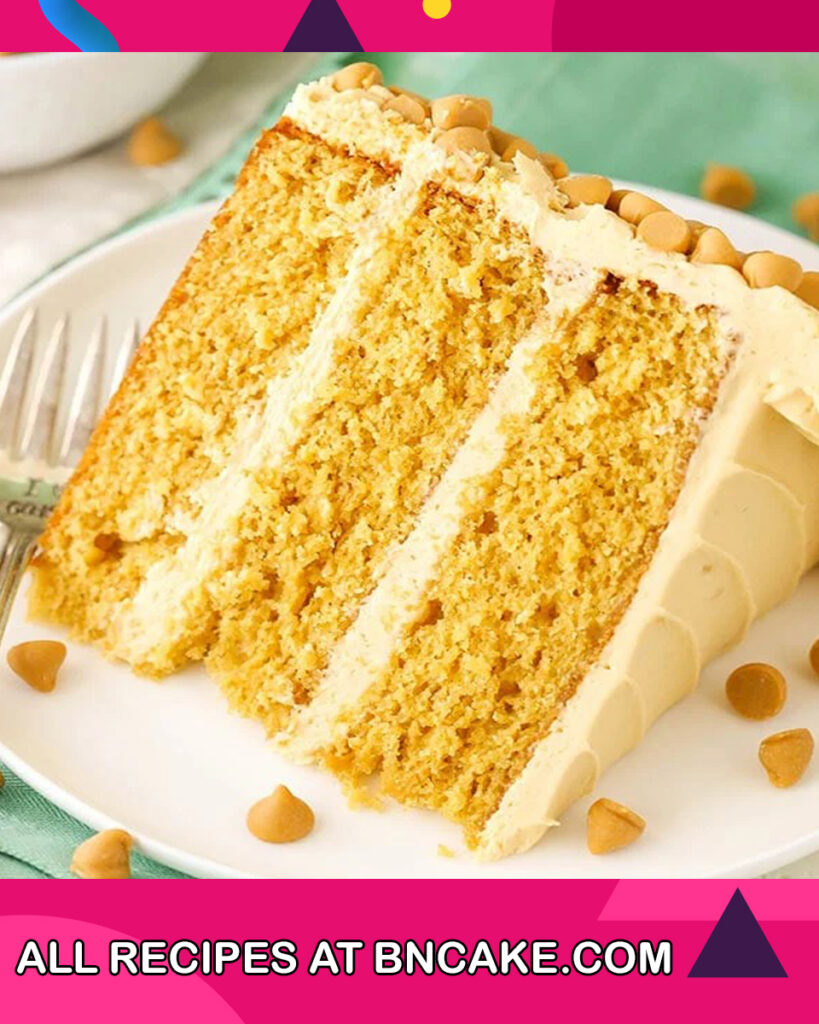
Ingredients For Butterscotch Cake
For the Cake Layers:
- 2 and 1/2 cups all-purpose flour
- 2 and 1/2 teaspoons baking powder
- 1/2 teaspoon salt
- 1 cup unsalted butter, softened
- 2 cups granulated sugar
- 4 large eggs
- 1 teaspoon vanilla extract
- 1 cup whole milk
For the Butterscotch Filling:
- 1 cup unsalted butter
- 1 and 1/2 cups packed brown sugar
- 1/2 cup heavy cream
- 1 teaspoon vanilla extract
- Pinch of salt
For the Butterscotch Frosting:
- 1 and 1/2 cups unsalted butter, softened
- 4 cups powdered sugar
- 1/2 cup butterscotch sauce (homemade or store-bought)
- 1/4 cup heavy cream
- 1 teaspoon vanilla extract
- Pinch of salt
Optional for Assembly and Garnish:
- Additional butterscotch sauce for drizzling
- Chopped nuts (such as pecans) for garnish
How To Make Butterscotch Cake
1. Preparing the Cake Layers:
- Preheat the oven to 350°F (175°C) and grease and flour three 8-inch round cake pans.
- In a medium bowl, whisk together the all-purpose flour, baking powder, and salt. Set aside.
- In a large mixing bowl, cream the softened butter and granulated sugar until light and fluffy.
- Add the eggs, one at a time, mixing well after each addition. Stir in the vanilla extract.
- Gradually add the dry flour mixture to the wet ingredients, alternating with the milk. Begin and end with the dry ingredients, mixing until just combined.
- Divide the batter evenly between the prepared cake pans and smooth the tops.
- Bake in the preheated oven for about 25-30 minutes, or until a toothpick inserted into the center of the cakes comes out clean.
- Remove the cakes from the oven and let them cool in the pans for about 10 minutes before transferring them to a wire rack to cool completely.
2. Making the Butterscotch Filling:
- In a saucepan, melt the butter over medium heat. Stir in the brown sugar and cook, stirring constantly, until the sugar has dissolved and the mixture is smooth.
- Gradually add the heavy cream while continuing to stir. Let the mixture come to a gentle boil, then reduce the heat to low and let it simmer for about 2-3 minutes.
- Remove the saucepan from the heat and stir in the vanilla extract and a pinch of salt. Let the filling cool before using.
3. Preparing the Butterscotch Frosting:
- In a large mixing bowl, beat the softened butter until creamy and smooth.
- Gradually add the powdered sugar, mixing on low speed until well combined.
- Add the butterscotch sauce, heavy cream, vanilla extract, and a pinch of salt. Beat on medium-high speed until the frosting is smooth and creamy.
4. Assembling the Butterscotch Cake:
- Place one cooled cake layer on a serving platter.
- Spread a layer of the prepared butterscotch filling evenly over the cake layer.
- Place the second cake layer on top of the filling.
- Repeat the process, adding another layer of butterscotch filling and topping it with the third cake layer.
5. Frosting the Cake:
- Cover the entire cake with the prepared butterscotch frosting, smoothing it over the top and sides.
- If desired, drizzle additional butterscotch sauce over the top of the cake for extra flavor and decoration.
- Optionally, sprinkle chopped nuts on top of the cake for added texture and visual appeal.
6. Refrigerate:
- Chill the assembled Butterscotch Cake in the refrigerator for a few hours before serving. This allows the flavors to meld and the frosting to set.
- Slice and serve your delicious Butterscotch Cake to enjoy the irresistible blend of flavors and textures that this dessert offers.
Please note that this formula is a comprehensive guide for making the Butterscotch Cake. Follow the instructions closely for a successful outcome, and feel free to customize the cake with your preferred garnishes and decorations.

How To Serve Butterscotch Cake
Serving Butterscotch Cake is a delightful experience that allows you to enjoy the rich and creamy flavors of this indulgent dessert. Here’s how to serve it:
1. Presentation:
- Start by placing the Butterscotch Cake on a clean and attractive serving platter or cake stand. Ensure that the cake is centered and well-positioned.
2. Slicing:
- Use a sharp knife to slice the Butterscotch Cake into individual servings. The cake layers and the luscious butterscotch filling and frosting create distinct layers that will be visible when you cut into the cake.
3. Garnish:
- Before serving, consider adding a finishing touch to the cake. You can drizzle a bit of extra butterscotch sauce over the top for an added burst of flavor and visual appeal. Additionally, you can sprinkle chopped nuts, such as pecans, on top for a delightful crunch.
4. Plating:
- Place a slice of Butterscotch Cake onto each dessert plate. Be sure to include a portion of the cake layer, the generous butterscotch filling, and the creamy frosting in each slice.
5. Temperature:
- Butterscotch Cake is best enjoyed at a slightly cool or room temperature. Make sure it’s not too cold from refrigeration, as this can affect the flavors and texture.
6. Pairings:
- While Butterscotch Cake is delicious on its own, you can enhance the experience by serving it with a dollop of freshly whipped cream or a scoop of vanilla ice cream. The contrast between the warm cake and the cool cream can be delightful.
7. Savoring:
- Encourage your guests to savor each bite of the Butterscotch Cake. The layers of moist cake, creamy filling, and luscious frosting create a symphony of flavors and textures that come together in a truly indulgent dessert.
8. Enjoyment:
- Share the joy of indulging in this decadent dessert with your guests. The richness of the butterscotch flavors and the care put into the cake’s creation are sure to make the experience memorable.
9. Serving Utensils:
- Use a cake server or a wide spatula to lift and transfer each slice to the dessert plates. This helps maintain the cake’s presentation and ensures neat servings.
10. Storage After Serving:
- If there are leftovers, be sure to store the remaining cake slices in an airtight container in the refrigerator to maintain their freshness.
Remember, serving Butterscotch Cake is about creating an enticing and satisfying experience for your guests. The layers of flavors and textures come together to offer a luxurious treat that’s perfect for special occasions or simply as a delightful dessert to enjoy any time.
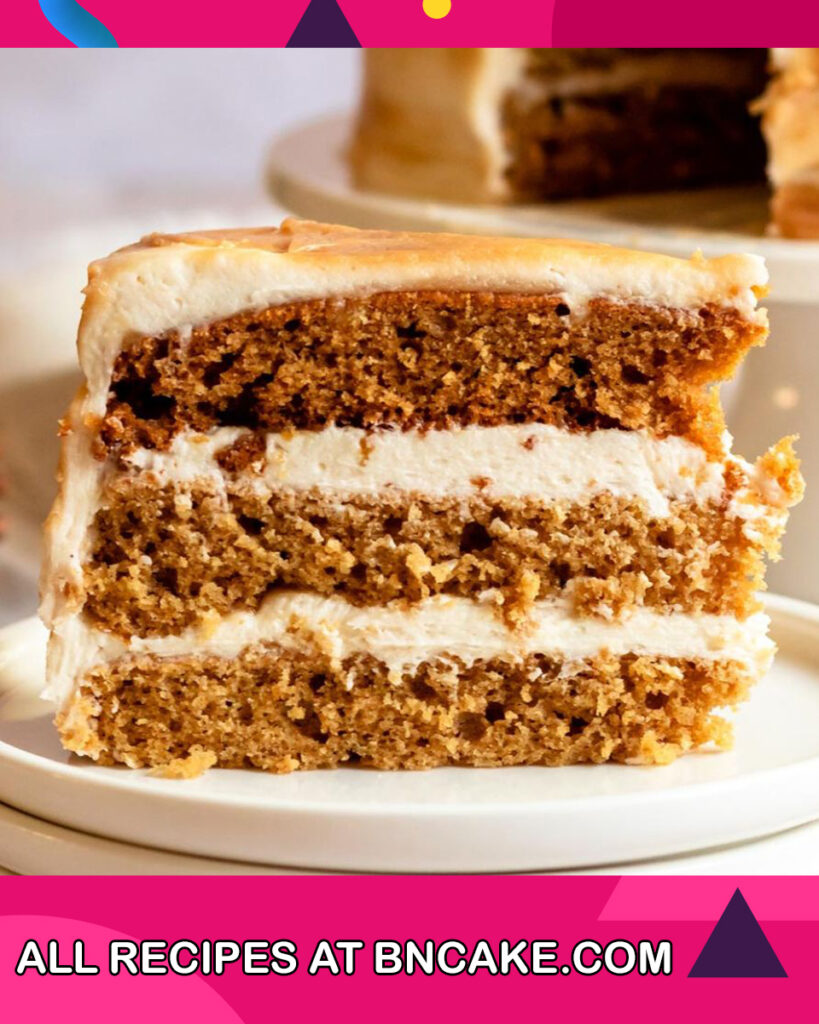
How To Store Butterscotch Cake
Storing Butterscotch Cake properly is important to maintain its freshness and prevent it from drying out. Here’s how to store your Butterscotch Cake:
1. Room Temperature:
- If you plan to consume the Butterscotch Cake within the next day or so, you can store it at room temperature. Place the cake in an airtight cake container or cover it tightly with plastic wrap to prevent it from drying out and to keep dust and debris away.
2. Refrigeration:
- For longer storage, especially if you have perishable fillings or frosting, it’s recommended to store the cake in the refrigerator.
- Place the cake in an airtight container to protect it from absorbing any odors from the refrigerator and to prevent the frosting from drying out.
3. Layer Separation:
- To avoid the layers of the cake from sticking together or becoming too moist, consider placing a piece of parchment paper or plastic wrap between the layers before storing.
4. Minimal Air Exposure:
- To prevent the cake from drying out, make sure the container is airtight and well-sealed. This is particularly important if your cake has exposed cut surfaces.
5. Whipped Cream and Garnishes:
- If your Butterscotch Cake has whipped cream or other perishable toppings, be aware that these elements may not hold up well during storage. It’s best to add whipped cream and garnishes just before serving to ensure freshness and quality.
6. Proper Placement:
- Store the cake on a flat and stable surface in the refrigerator to avoid any tilting or slipping that might damage its delicate layers.
7. Freezing (Optional):
- If you have a lot of leftovers and want to extend the shelf life, you can freeze Butterscotch Cake.
- Wrap individual slices or the whole cake tightly in plastic wrap and then in aluminum foil. Frozen cake can be stored for several weeks.
- Thaw frozen cake slices in the refrigerator before serving. Allow them to come to room temperature before consuming.
8. Quality Check:
- When storing leftovers, do a visual and smell check before serving. If the cake layers have become overly moist or the texture is compromised, it might be best to enjoy it within a shorter time frame.
Remember that while these guidelines can help maintain the quality of your Butterscotch Cake, desserts like these are best enjoyed when they are freshly made. Always consider the freshness of the ingredients and the quality of the cake when deciding on storage options.
OTHER CAKE RECIPES TO TRY
Tips And Tricks For Butterscotch Cake
Here are some helpful tips and tricks to ensure your Butterscotch Cake turns out as delicious and delightful as possible:
1. Quality Ingredients:
- Use high-quality ingredients for the best results. Fresh butter, eggs, and good-quality vanilla extract can make a significant difference in flavor.
2. Accurate Measurements:
- Baking is a science, so use precise measurements for both dry and wet ingredients to ensure the proper balance of flavors and textures.
3. Softened Butter:
- Make sure your butter is properly softened before creaming it with sugar. Softened butter ensures a smooth and even batter.
4. Room Temperature Eggs:
- Use eggs at room temperature for better incorporation into the batter. Cold eggs can result in an uneven mixture.
5. Proper Mixing:
- Mix the batter until just combined after adding the dry ingredients. Overmixing can lead to a dense cake.
6. Sifting Dry Ingredients:
- Sift the dry ingredients (flour, baking powder, and salt) before adding them to the batter. This helps break up any lumps and ensures even distribution.
7. Alternate Dry and Wet Ingredients:
- When adding the dry ingredients to the batter, alternate with the milk. This prevents overmixing and helps create a tender cake.
8. Even Cake Layers:
- Divide the batter evenly among the cake pans to ensure consistent layers for easy assembly.
9. Leveling Cake Layers:
- After baking, level the tops of the cake layers using a serrated knife or a cake leveler to create even surfaces for stacking.
10. Butterscotch Filling Consistency:
- When making the butterscotch filling, ensure it reaches a smooth and slightly thickened consistency. It shouldn’t be overly runny.
11. Frosting Consistency:
- When making the butterscotch frosting, make sure it’s well whipped and has a smooth texture before applying it to the cake.
12. Crumb Coat:
- Apply a thin layer of frosting (crumb coat) before fully frosting the cake. This helps seal in any loose crumbs and provides a smooth base.
13. Chill Between Layers:
- Refrigerate the cake between adding layers of filling and frosting. This prevents the layers from sliding and helps set the cake.
14. Garnish with Care:
- When adding additional butterscotch sauce or garnishes, do so just before serving to maintain their freshness and appearance.
15. Storage Considerations:
- If storing in the refrigerator, ensure the cake is properly wrapped or placed in an airtight container to prevent drying out.
16. Room Temperature Serving:
- Allow the cake to come to room temperature for a short while before serving. This can enhance the flavors and textures.
17. Enjoy Fresh:
- Butterscotch Cake is best enjoyed within a day or two of baking when its flavors and textures are at their peak.
By following these tips and tricks, you can create a Butterscotch Cake that’s not only visually appealing but also wonderfully delicious, providing a delightful treat for yourself and those you share it with.

FAQs And Troubleshooting
FAQs:
1. Can I use salted butter instead of unsalted butter?
While you can use salted butter, it’s generally recommended to use unsalted butter in baking so that you have more control over the salt content. If you use salted butter, consider reducing the amount of added salt in the recipe.
2. Can I use a different type of frosting?
Absolutely! While butterscotch frosting complements the cake’s flavors, you can experiment with other frosting options like cream cheese frosting or vanilla buttercream if you prefer.
3. Can I make the cake in advance?
Yes, you can bake the cake layers in advance and store them in the freezer. Thaw them before assembling the cake. However, it’s best to add the filling, frosting, and any garnishes closer to the serving time for optimal freshness.
4. Can I make a gluten-free version?
You can experiment with gluten-free flour blends, but keep in mind that the texture and taste may differ slightly from the original recipe.
Troubleshooting:
1. My cake layers are dry. What went wrong?
Overbaking or using too much flour can result in dry cake layers. Make sure to follow the recommended baking time and measurements.
2. My frosting is too runny. How can I fix it?
If the frosting is too runny, try adding more powdered sugar gradually until it reaches the desired consistency. Refrigerating the frosting briefly can also help it firm up.
3. My cake layers are uneven or sunk in the middle. What caused this?
Uneven cake layers can result from uneven mixing or uneven oven temperature. Sinking in the middle might be due to opening the oven door too early during baking. Ensure proper mixing and oven practices.
4. My filling is too thick or grainy. How can I fix it?
If the filling is too thick, you can gently reheat it on the stovetop and add a small amount of cream to thin it out. If it’s grainy, it might not have dissolved completely. Ensure you cook it over low heat while stirring until smooth.
5. My cake layers stuck to the pans. How can I prevent this?
Properly grease and flour the cake pans or use parchment paper rounds at the bottom. This helps release the cake layers without sticking.
6. The cake layers are crumbling when I cut them. What can I do?
Crumbling cake layers might be due to overbaking or not letting them cool adequately before slicing. Try to be gentle when cutting and use a sharp knife.
7. My frosting has air bubbles. How do I avoid this?
To prevent air bubbles in your frosting, use a spatula to mix the ingredients rather than an electric mixer. If air bubbles form, you can try gently tapping the bowl on the counter to release them.
8. My frosting is too sweet. Can I adjust the sweetness?
You can adjust the sweetness by adding a pinch of salt to balance the flavors. Alternatively, adding a touch of lemon juice can help cut down the sweetness.
9. My cake layers are sliding or leaning. How can I fix this?
If the cake layers are sliding, make sure the filling and frosting are thick enough to hold the layers in place. Refrigerate the cake between adding layers to help set the filling.
Remember, baking is an art that sometimes requires trial and error. Don’t be discouraged by challenges – they’re opportunities to learn and improve your baking skills. If you encounter any issues, take note of what went wrong and adjust your approach for the next time.
Nutrition Information
Nutritional information can vary based on portion size and specific ingredients used, but here’s an approximate breakdown of the nutrition content for a typical slice of Butterscotch Cake (assuming a standard recipe makes 12 slices):
Calories: Approximately 400-500 calories per slice, Total Fat: Around 20-30 grams, Saturated Fat: Approximately 12-18 grams, Cholesterol: About 80-150 mg, Sodium: Around 150-300 mg, Total Carbohydrates: Approximately 50-70 grams, Dietary Fiber: Around 0-2 grams, Sugars: Approximately 40-50 grams, Protein: Around 2-5 grams
Remember that Butterscotch Cake is a rich and indulgent dessert, so the nutritional content is relatively high compared to lighter options. If you’re looking for specific dietary information, it’s recommended to use a nutritional calculator with the exact ingredients and measurements you plan to use.
